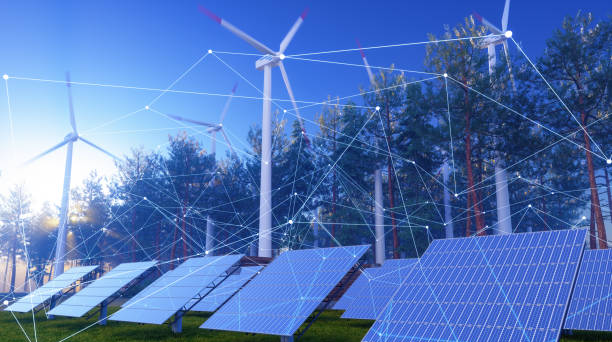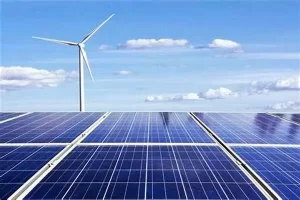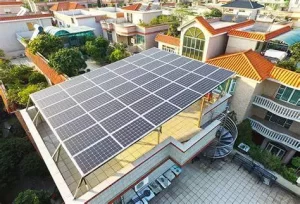How Telecom and Energy Solutions Are Shaping the Future of Smart Cities and Infrastructure
The advent of smart cities represents a significant transformation in urban living, driven by the integration of advanced technologies and innovative solutions. Among the key enablers of this transformation are telecom and energy solutions, which play a pivotal role in shaping the infrastructure and functionality of smart cities. This article explores how telecom and energy solutions are influencing the development of smart cities and modern infrastructure.

The Concept of Smart Cities
Smart cities leverage technology and data to enhance the quality of life for their residents, optimize resource usage, and improve overall efficiency. They integrate various systems and services, such as transportation, utilities, and public safety, into a cohesive, interconnected framework. The success of smart cities hinges on the seamless integration of telecom and power solutions, which underpin the infrastructure needed for these advanced systems.
2.The Role of Telecom Solutions in Smart Cities
2.1. Enhanced Connectivity
Telecom solutions are fundamental to the connectivity of smart cities. High-speed internet, cellular networks, and wireless communication technologies provide the backbone for data transmission and communication across urban environments. With the deployment of 5G networks, smart cities can achieve ultra-fast data speeds and low latency, which are crucial for supporting a multitude of connected devices and sensors.
Enhanced connectivity facilitates the development of various smart city applications, such as intelligent transportation systems, smart grids, and IoT-based services. For example, real-time traffic management systems rely on continuous data exchange between vehicles, traffic signals, and control centers to optimize traffic flow and reduce congestion.
2.2. Data Collection and Analysis
Telecom infrastructure supports the collection and transmission of data from numerous sources, including sensors, cameras, and smart devices. This data is crucial for making informed decisions and driving the operations of smart city systems. Advanced analytics and machine learning algorithms process this data to generate actionable insights, enabling cities to address issues proactively and improve service delivery.
For instance, smart waste management systems use data collected from sensors in waste bins to optimize collection routes and schedules, reducing operational costs and environmental impact. Similarly, smart energy meters provide real-time consumption data that helps utilities manage demand and improve energy efficiency.
3.The Role of Energy Solutions in Smart Cities
3.1. Smart Grids
Energy solutions are integral to the efficient management and distribution of power in smart cities. Smart grids represent a significant advancement over traditional power grids, incorporating digital technology to monitor and manage electricity flows more effectively. Smart grids enable real-time monitoring of energy usage, automated fault detection, and dynamic load balancing.
Through smart grids, cities can achieve greater energy efficiency, reduce outages, and integrate renewable energy sources more seamlessly. For example, smart grids can balance energy supply and demand by adjusting the distribution of power based on real-time data, thus optimizing the use of renewable energy and reducing reliance on fossil fuels.
3.2 Renewable Energy Integration
Integrating renewable energy sources, such as solar and wind power, is a key component of sustainable smart city development. Energy solutions enable the incorporation of these sources into the city’s energy mix, contributing to reduced greenhouse gas emissions and increased energy independence.
Smart energy management systems facilitate the efficient use of renewable energy by predicting generation patterns and optimizing storage and distribution. For instance, solar panels on rooftops and wind turbines can generate clean energy, which is then stored in batteries or fed into the grid. Energy management systems ensure that this renewable energy is utilized effectively, reducing the reliance on conventional power sources.
Synergy Between Telecom and Energy Solutions
The integration of telecom and power solutions creates a synergistic effect that enhances the functionality and efficiency of smart cities. Here’s how the synergy plays out:
4.1. Integrated Infrastructure
Telecom and power solutions work together to create a unified infrastructure that supports a range of smart city applications. For example, smart lighting systems use telecom networks to communicate with central control systems, allowing for remote monitoring and management. These systems can adjust lighting levels based on real-time data, improving energy efficiency and reducing operational costs.
4.2. Improved Resource Management
By combining telecom and energy solutions, cities can achieve better resource management and operational efficiency. For example, smart grids rely on telecom networks to transmit data and control signals, ensuring the optimal distribution of electricity. Similarly, telecom networks support the communication between smart meters and utility companies, enabling more accurate billing and demand management.
4.3. Enhanced Public Services
Telecom and power solutions contribute to the enhancement of public services by enabling smart city applications that improve quality of life. For instance, smart parking systems use telecom networks to provide real-time information on available parking spaces, reducing congestion and saving time for drivers. Smart environmental monitoring systems use energy-efficient sensors to track air quality and other environmental factors, contributing to healthier urban environments.
Challenges and Considerations
While the integration of telecom and power solutions offers significant benefits, there are challenges to consider:
Infrastructure Costs: Developing and maintaining the necessary telecom and energy infrastructure can be costly. Cities need to balance investment with long-term benefits and ensure that resources are allocated efficiently.
Data Security and Privacy: The vast amounts of data generated by smart city systems raise concerns about security and privacy. Ensuring robust data protection measures is essential to safeguard sensitive information and maintain public trust.
Interoperability: Integrating diverse technologies and systems requires ensuring interoperability and standardization. Cities must address compatibility issues and ensure that different systems can work together seamlessly.
6.Conclusion
Telecom and energy solutions are fundamental to the development of smart cities and modern infrastructure. By providing enhanced connectivity, efficient energy management, and integrated systems, these solutions play a crucial role in shaping the future of urban living. As cities continue to evolve, the synergy between telecom and energy technologies will drive innovation, improve quality of life, and contribute to sustainable urban development. Embracing these technologies and addressing associated challenges will be key to realizing the full potential of smart cities and creating resilient, efficient, and livable urban environments.
https://energystoragecontainer.com/category/product/
Contact us
- Email:[email protected]
- Tel: +86 13651638099
- Address: 333 Fengcun Road, Fengxian District, Shanghai
Get A Quote Now!
Read more

Unveiling Photovoltaic+Energy Storage: Four Major Application Scenarios Leading the Future of Energy
In this way, the energy landscape is evolving, and one of the most thrilling developments in renewables is the integration of photovoltaics energy storage.

From Theory to Practice: Four Methods for Estimating Photovoltaic Power Generation
Photovoltaic power generation has become an essential part of modern energy solutions, particularly in home solar systems and distributed power applications

Rack-Mounted Lithium Iron Batteries: Creating Efficient and Reliable Energy Storage Solutions
When it comes to modern energy solutions, rack-mounted lithium iron batteries are taking center stage in a variety of industries. Whether you’re powering data centers, stabilizing energy for households, or keeping critical systems online at 5G base stations, these batteries have become the unsung heroes of our electrified world.

Late Night Energy Saving Tips: How to Maximize Electricity Savings During Off-Peak Hours
With rising energy costs, homeowners are increasingly exploring innovative ways to save on their electricity bills. One effective approach is utilizing off-peak hours—times when electricity rates are significantly lower due to reduced demand.
